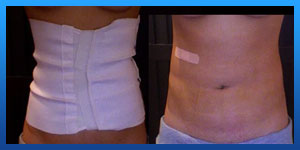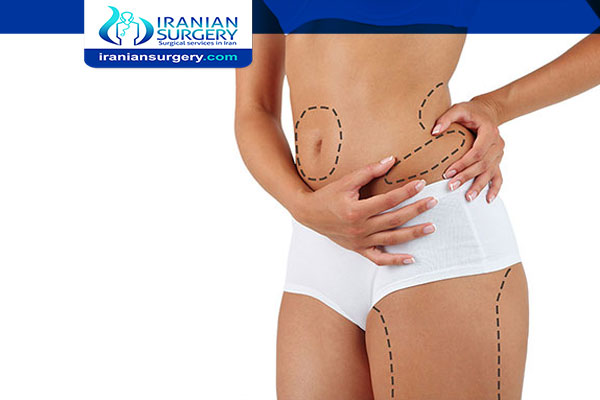Pain after liposuction
Pain after liposuction surgery
After a liposuction procedure, you may experience some pain and discomfort, but it is manageable, and your doctor will give you clear instructions on how to manage the pain during recovery. The recovery and results will vary depending on the location of the procedure and the type of anesthesia used. Recovery experiences can also differ from person to person according to pain tolerances, body types, underlying health conditions and more.
Read more about : How to treat nerve pain after liposuction?
What is the pain like after liposuction?
In general, you can expect some pain and discomfort for the first two to four days after liposuction. After this time, the level of pain will gradually decrease. The area around the surgical site may feel tender and sore but will get better fairly rapidly. Local anesthetics last for 12 to 24 hours after the procedure and continue to reduce pain levels during that initial recovery period. Even with general anesthesia, some local anesthetic should also be used, which will help comfort levels post-procedure.
During the initial recovery period when the local anesthetic is still taking effect, pain levels should be very low. Many patients describe their discomfort during this time as more of a soreness or tenderness. As recovery progresses and the local anesthetic wears off, pain and discomfort levels should still be low. Clients liken their pain quality as being similar to a sunburn or muscle soreness after an overly vigorous workout.

Some doctors may prescribe pain medication to use during recovery, especially if they use general anesthesia for the procedure and no local anesthetics. However, for many liposuction patients, a little acetaminophen after the surgery is more than sufficient for dealing with any pain. Some patients may not even need to use pain medication after liposuction, as their discomfort level is very mild.
Read more about : What to expect 3 weeks after liposuction?
How long does pain last after liposuction?
The recovery process after liposuction can vary for each individual and depends on the type of anesthesia used, the area of the body affected and personal health history and conditions. Here’s a timeline of what to expect regarding pain during the recovery process:
. The first day: Most liposuction procedures are outpatient, which means you can go home that same day. However, you will need someone else to drive you home, especially if general anesthesia is used. Sedation and pain medications may make it unsafe for you to drive yourself on the day of the procedure. Anesthetics and pain medications you receive during the operation will help keep pain at a minimum during these initial 24 hours post-surgery.
. The next two to three days: During the first few days following surgery, you may experience moderate pain and discomfort levels as the anesthesia wears off. You may have prescription medications or instructions to use acetaminophen for any pain you experience. You might have to wear compression garments to protect the treatment areas. You will also want to continue to rest and avoid too much physical activity.
. Weeks one and two: After the first few days, most patients notice a significant reduction in pain and discomfort and may need to rely less on pain medications of any kind. Compression garments may still be recommended. Depending on the details of your procedure and personal health, it may be safe to return to work at some point between three days and two weeks post-procedure.
. Weeks three to five: During this point in recovery, most people feel little to no pain or discomfort. At about four weeks’ time, light exercise is fine to resume, although strenuous activity should still be avoided for a while.
. Weeks six and beyond: At this point, there should be no pain at all, and the procedure’s results should be more visible now as the swelling should also have subsided. All normal activity is safe to resume unless a doctor instructs otherwise.
For the most part, pain and discomfort after liposuction are mild to moderate and highly manageable. Your own timeline may vary, but you can expect the pain to subside rapidly after the procedure, which will allow a gradual return to all of your normal activities.
How to Reduce Post-Liposuction Discomfort
If you’re wondering what the fastest way to recover from liposuction is, there is no one answer. There are several things you can do to lessen the pain and discomfort associated with liposuction surgery and recovery. Below are our favorite tips for the best liposuction recovery.
. Compression garments
Your doctor will likely provide you with a compression garment to use during recovery. These garments are tailored to the area of the body where the liposuction occurred and provide support for this area, reduce swelling and help manage pain and discomfort. Follow your doctor’s recommendations regarding when and how long you should wear these garments for best results in your recovery process.
. Lymphatic massage
Many patients find relief and relaxation with weekly lymphatic drainage system massages. These specialized massages focus on releasing toxins that build up in the lymph nodes. One study has shown that lymphatic massages reduced edema more than standard compression garments after core liposuction and abdominoplasty for 20 post-surgery patients.
. Healthy diet
A healthy diet is an essential component of an easy recovery. Healthy, whole foods can help reduce swelling during the recovery period and aid in the healing process. Try to choose low-sodium foods. Too much salt can make the body retain water, increasing the amount of swelling. Healthy, lean sources of protein will aid in muscle recovery and wound healing, so include some protein in every meal and snack.
You should also avoid sugar, as it can decrease immune function and slow down healing. Fruits and vegetables high in fiber, vitamins and water content are some of the best foods you can eat while recovering, so stock up on items like celery, watermelon, grapefruit, zucchini and berries. If you are struggling with bloating or nausea, eat smaller meals more frequently instead of three large meals per day.
Be sure to drink lots of water and other low-sodium, low-calorie beverages like tea or diluted juice. Before your procedure, you can stock the kitchen with healthy foods so it’s easier to make good choices during recovery.
. Light activity
The first 24 hours of recovery should be very restful, but after this, it’s important to keep moving. Light exercise in the first couple of weeks, like taking walks, is a good idea in early recovery. Remember that you should avoid strenuous activity until after the first few weeks of recovery.
. Pain medications
Your doctor will instruct you on what types of pain medications to use and how often to take them. You may have prescription pain medications or may use acetaminophen as needed. Avoid anti-inflammatory pain relievers such as ibuprofen, as they can increase bruising and drainage at the wound sites.
Source:
. https://synergywellnesscenter.com/blog/liposuction-recovery-pain-expectations/


